#OSH Culture
Explore tagged Tumblr posts
Text



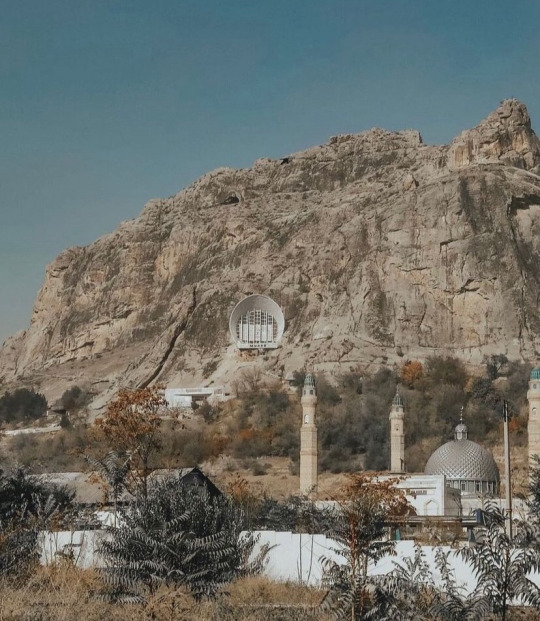

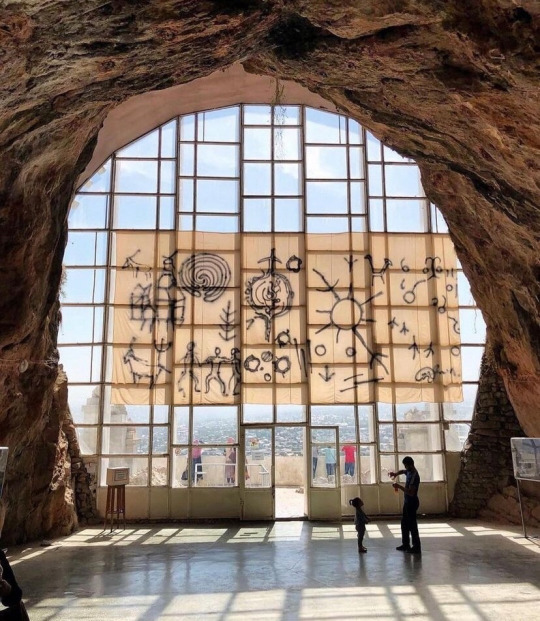


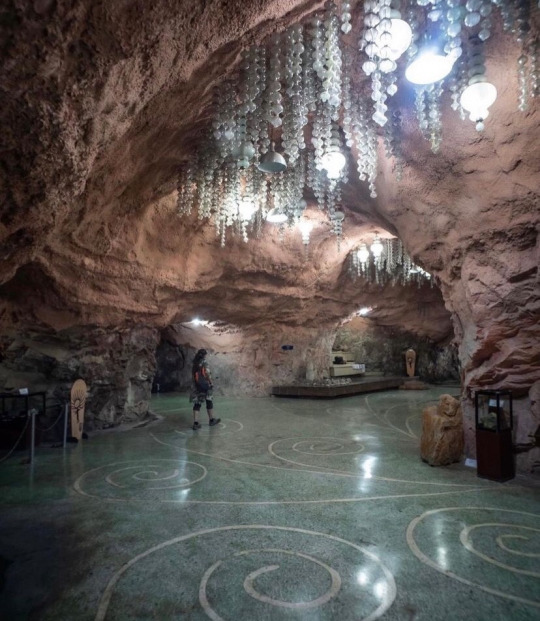
𝙻 𝚘 𝚅 𝚎
National Historical and Archaeological Museum Complex Sulayman, Osh. Kyrgyzstan 🇰🇬 (1949)
#Travelingwithoutmoving 🧭🧳
#architecture #architecturephotography #architecturelovers #architectureporn #architecturedesign #architecturelover #architecturephoto #architecturedaily #architecture_hunter #architecturedetail #architecturephotos #architecturedose #architectureanddesign #architecturelife #architecturegram #architecturelove #architecturephotograpy #architectures #architectureinspiration #architecture_view #architektur #architekturfotografie #architekturfotograf #architektur_erleben #architekturliebe #architekturporn #architekturelovers
What A Wonderful World by Louis Armstrong 🎧
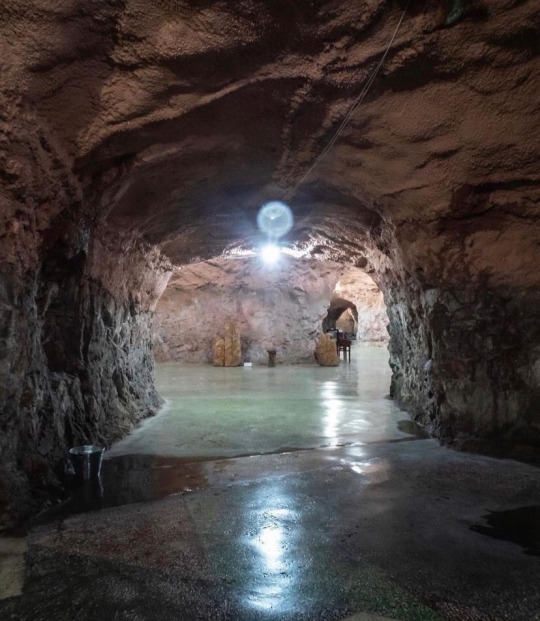
#l o v e#Osh. Kyrgyzstan#kyrgyzstan#🇰🇬#4/2024#traveling#Sulayman#Complex#Archaeological Museum#Archaeological#Museum#National Historical#Historical#architecture#architecture love#architecturelovers#architecturephotograpy#nostalgia#aesthetic#old aesthetic#building#architecturephoto#culture#vintage#old building#1940s#x-heesy#now playing#music and art#contemporaryart
209 notes
·
View notes
Text




Celebrating Indigenous Peoples' Day!
Today the USA marks Indigenous Peoples' Day - to celebrate, have a listen to these podcasts to learn some of the Indigenous, queer history of what is now the USA.
Osh-Tisch
Osh-Tisch was a batée born in the mid-19th-century Crow Nation. Batée is a uniquely Crow gender identity, describing a person assigned male at birth, who performs female as well as specifically batée social roles. Osh-Tisch was renowned for their skills as a craftsperson, their bravery in the 1876 Battle of the Rosebud, and as the best poker player in the region. In the face of attempts by the US government to force assimilation to Western ideas of gender, Osh-Tisch’s community fought for their right to express their identity.
[Image source: Will Roscoe’s Changing Ones: Third and Fourth Genders in Native North America]
We'wha
Born c.1849 at Zuni (now in New Mexico), We’wha was a lhamana - a Zuni gender including both masculine and feminine roles. Like many lhamana, We'wha was a highly skilled craftsperson, proficient in both traditionally masculine, and traditionally feminie crafts. In 1885, We’wha travelled to Washington DC as a representative of the Zuni people, where they worked with anthropologists and the Smithsonian museum to demonstrate and share information about Zuni crafts and culture, and met US President Grover Cleveland.
[Image source]
Bíawacheeitchish
Born in the early 1800s, Bíawacheeitchish (Woman Chief) was a Gros Ventre woman who lived amongst the Crow people. She was skilled in traditionally masculine pursuits like riding, hunting and warfare. Polygamy was common amongst the Crow, and Bíawacheeitchish married four women. Her military prowess led to her becoming one of the most respected Crow chiefs.
[Image source]
Kapaemahu
According to Hawai'ian oral histories, in around the 1500s, four healers visited Honolulu from what are now the Society Islands. These healers - named Kapaemahu, Kahalao, Kapuni, and Kinohi, were māhū, a gender recognised in Kānaka Maoli (Native Hawai’ian) culture, with a particular focus on healing and caring roles.
When they departed Hawai'i, the four māhū left behind four huge stones as a memento of their visit, imbued with their healing powers, which are still revered in Hawai'i today.
[Image source]
#indigenous peoples day#indigenous history#crow history#hawaiian history#zuni history#queer history#two-spirit#two-spirit history#lgbt history#lgbtq#native american history
558 notes
·
View notes
Text
A warrior, artist, and incredibly valued person in the Crow nation, Osh-Tisch was a baté person and is remembered as one of the last baté people to have existed before colonizers committed genocide against this part of Crow culture. A baté person is a person who is born with a body that many European cultures of the time designated as male, and later is discovered to be a woman and is accepted as a woman in Crow culture.
Support Making Queer History on Patreon
Send in a One-Time Donation
390 notes
·
View notes
Text
zaterran/saurian lore masterpost (all games)
these are mostly meant to be notes for myself so i don't have to constantly check the fandom wiki because i hate using that website, but anyone can use this post as a guide or reference point. there is only so much information about zaterra and its people, but i tried to compile and summarize everything we do have.
if i missed anything, or got something wrong, let me know.
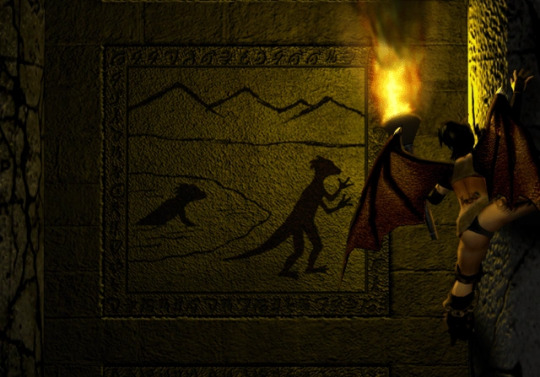
note: i will be referring to them as only zaterrans just to make this easier. midway couldn't decide on a name, and nrs was stuck on that for a while too—but now that mk1 has seemingly settled this, i refuse to go back and forth between them all.
history
original & alternate timelines:
millions of years ago, zaterrans lived on earthrealm, being a bipedal people descended from dinosaurs. unlike their dinosaur ancestors, they had evolved more intelligent brains and were able to thrive as a proper society. however, when shinnok turned against his fellow elder gods and came into conflict with raiden, the following battle was so disastrous that it triggered the K-T event on earthrealm that wiped out the dinosaurs and almost all life on earthrealm. the surviving zaterrans fled the disaster and were split into two: some of them left earthrealm to reside in a realm called zaterra ("new earth") in hopes of rebuilding their culture, and the rest took refuge underground in hollow earth.
for the zaterrans that were displaced, things were fine for a while, until shao kahn came along to conquer their realm. the zaterrans lost the effort against the emperor, and following the trend of other realms that have been conquered by shao — such as edenia, vaeturnus, osh-tekk, and arnyek — zaterra was absorbed into outworld. after this, the zaterrans left were taken into slavery and driven to near extinction. it's not known exactly when shao took zaterra, or how long it took for the zaterrans to start dying out out, but syzoth's mortal kombat 2 bio mentions that his race was believed to be extinct "millions of years ago." in addition, the few remaining zaterrans alive don't actually remember these events happening.
as for the zaterrans that fled to hollow earth, they managed to endure and thrive underground without any interference. there is not much information on their history or what they experienced in hollow earth, other than that they went undetected and are ruled over by a matriarch.
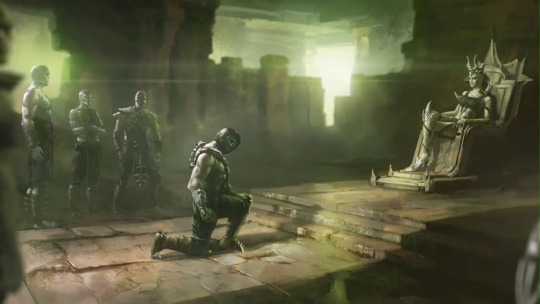
the new era:
in liu kang's new era, zaterra is part of outworld, making zaterrans now native to outworld instead of residing in the realm as a result of conquest. adding to this, there's now more than one species: instead of being different terms to refer to the same group, "zaterran" and "saurian" are now two separate species from one another. the difference between them has not been elaborated on yet. syzoth's mk1 bio calls zaterrans "one of the reptiloid races which lives on outworld's fringes", so whether there are more reptiloid groups outside of zaterrans and saurians is also up to debate.
zaterrans are no longer a near-extinct race, but they still face hardship and are heavily discriminated against. the full history of zaterran-outworld relations in the new era is unknown, but several of syzoth's intros indicate that they once thrived above ground in outworld, before being herded underground by "warmbloods"/non-reptilians. they, along with saurians, now reside in outworld's subterranean areas. why exactly they were driven underground has not been explained yet, but the history there has resulted in both groups hating one another; outworlders are openly bigoted to zaterrans such as syzoth, while warmbloods are generally unwelcome in zaterra.
zikandur has been brought up in some lines, most likely being an area in zaterra where lots of outworld’s reptilian people currently live. its history is unexplored, aside from mentioned past events like the zikandurian floods. it is apparently at risk of being invaded by the kytinn, though why the latter are doing that is also unknown.
at some point in time, a policy was passed in the zaterran government to kill all zaterran shapeshifters. the reasoning behind this and how long ago it started is unknown but considering that syzoth was bullied relentlessly for his shapeshifting mutation, knowledge of zaterran shapeshifters must have faded from the general public after this order was first carried out. in general, zaterra's government is implied to be extremely corrupt.
many zaterrans are dissatisfied with the royal family, either attempting to start or joining rebellion efforts. after his bloody escape from lei chen prison, general shao has been recruiting these dissatisfied zaterrans to join his rebel army in outworld, with the goal of overthrowing mileena's rule.
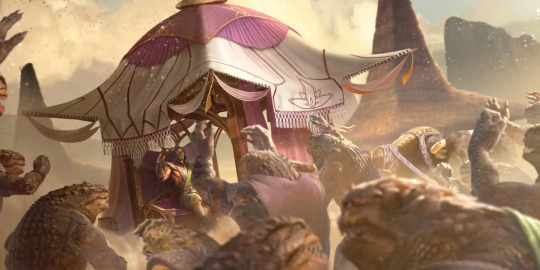
biology
original & alternate timelines:
the design of zaterrans changed over the games, but they were generally depicted as green (though this also varies, i.e in the case of khameleon) bipedal humanoids with scales, claws, and lizard-shaped heads. they are also close to size of the average human as well. similar to chameleons and frogs, zaterrans have tongues that can extend far beyond their body to catch prey. zaterrran saliva is acidic, able to be used in kombat as a attack/defense mechanism and possibly to help digest food. this acid is very strong, able to melt right through flesh. for some reason, their blood is green.
a zaterran's diet differs from the average human one, mainly consisting of live bugs/insects/worms, but raw meat (including humans) is also on the table. zaterrans are able to make themselves and others around them invisible.
in the first two timelines, all zaterrans possessed the ability to shapeshift between their true forms and more human-like appearances. there is a catch to this, though: their society is matriarchal, and any zaterran who spends too long away from a matriarch & her influence will devolve, losing their ability to maintain a human disguise. this will also negatively impact the mental state of the affected zateerran. however, if they make their way back to the matriarch, the ability to look human and general sanity will return.
alongside all of this, there is a card in mortal kombat mobile that confirms they can regenerate their limbs.

the new era:
in the new era, zaterran biology is generally similar to how it was in the previous timelines, but with some changes.
for starters, these new zaterrans are bigger and more animalistic-looking than their old versions. they are still able to walk on two legs, but one of the moves syzoth's boss has in his invasions season confirms that they can also run around on all four legs. the previous games flip-flopped on whether or not to give zaterrans tails, but in mortal kombat 1 they have tails again—these are used by zaterrans to grab and move things, essentially like a fifth limb.
i have no clue if their actual limbs can still regenerate or not.
outside of these small changes, there is one very significant one in the new era: the average zaterran is no longer able to shapeshift. there are some zaterrans who are able to shapeshift between a human form and reptiloid form, but those who hatch with this mutation are not accepted by their people and often bullied, run out of their homes, or killed. they also don't seem to be matriarchal anymore.

all known members
original & alternate timelines:
SYZOTH/REPTILE:
a long-lasting franchise staple and the most well-known zaterran in the series, syzoth — better known as his codename "reptile" — lived a long life of servitude. original timeline: syzoth was one of the last surviving members of his species, desperate to find a way to bring back his people. syzoth loyally served shang tsung and shao kahn, who kept his loyalty with the promises of restoring the zaterran race. ironically, shao was the one who caused the extermination of his people, but syzoth did not know about this. after shao was murdered by the deadly alliance, syzoth wandered around before he turned to serving nitara (who he'd ran into previously and gotten his kirehashi blade from), as he did not know how to live without serving a master. nitara accepted him, but unbeknownst to syzoth, she too was deceiving him. the vaeternian manipulated syzoth into battling cyrax, damaging the cyborg, which in turn would help with nitara's goal of getting the portal sphere. when syzoth eventually realized he was being used, he was enraged and chased after nitara and cyrax to the lava shrine, but arrived too late. the only thing there was the egg of onaga. it hatched, shining a beam of light onto syzoth, making his body become a vessel for the dragon king. much later, when shujinko defeated onaga and his soul was bound to the netherrealm by nightwolf, syzoth was once again able to have free will and gain control of his own body. he was seen in the red dragon's lair for unknown reasons (most likely trying to create hybrids that would restore his race), and joined the forces of darkness at the battle of armageddeon. he was killed at the battle, along with the majority of the other fighters. alternate timeline: thanks to the reset by raiden, syzoth was back to serving shao kahn and shang tsung, fighting against the earthrealmers in the tournament and later battles. after losing the tournament, syzoth knew that shao kahn would not take kindly to this failure and kept his guard up. he was proven right when the osh-tekk warrior kotal was sent to assassinate him in his sleep; however, to syzoth's surprise, kotal spared his life and didn't go through with killing him. the following morning, shao kahn formally introduced the two, saying that kotal had hand-picked syzoth to serve under his command. from there, kotal earned syzoth's genuine loyalty. when shao died and mileena seized the throne, kotal declared a coup against her. syzoth was at his side during this, taking a blow for him, and continued to loyally serve afterwards. understanding that kotal saw value in him where shao did not, syzoth was committed to serving the new ruler of outworld as a close follower and friend. his whereabouts and status after the events of mortal kombat X are unknown, outside of a few mentions in intros and a small appearance in the krypt from mortal kombat 11.
KHAMELEON:
debuting in mortal kombat trilogy as a secret character, khameleon was the last known female member of her race. unlike syzoth, khameleon actually knew the truth of their people's history. however, because she chose to fight for earthrealm and wished to slay shao, this meant the last surviving members of the zaterran race were mortal enemies. at some point, khameleon set out to search for syzoth. she spent a long time looking for him, wishing to inform him that shao kahn was responsible for their race's extinction, and try to start a new generation of zaterrans. once she found him and reveal the truth, syzoth initially agreed to help her kill the emperor—only for him to fall under shao's influence once again, turning against khameleon. she escaped and wandered the realms until she heard of a battle that would happen in edenia, with the victor being given the prize of ultimate power. khameleon knew that shao kahn getting this would be disastrous and joined the forces of light in the battle of armageddon. along with the rest of the fighters, khameleon died at the pyramid. while she was referenced a few times and even made a brief cameo in the background of mortal kombat 9, khameleon's whereabouts and history after raiden's timeline reset are unknown.
CHAMELEON (unconfirmed):
debuting in the same game khameleon did as a fellow secret fighter, ch-ameleon never actually got a storyline or arcade ending in mortal kombat trilogy, unlike his female counterpart. the only information about chameleon at the time was that he was mentioned to be "one of shao kahn's deadliest warriors." it took until chameleon's next appearance to finally get a (extremely vague) backstory: supposedly, he was present at every major event in the games dating back to liu kang's victory in the tournament, but constantly kept himself hidden and watched everything unfold while waiting for "his moment" to arrive. he fought with the forces of darkness at the battle of armageddon, dying at the pyramid with everyone else. chameleon's presence in the alternate timeline is also miniscule. in mortal kombat x, one of syzoth's mirror match intros will have him question if the counterpart in front of him is chameleon, implying the two know each other. in addition, chameleon falls to his death in mortal kombat 11's krypt, but the canon status of the krypt is debatable. other than this, there's no information on him. the reason that chameleon's status as a zaterran is marked as "unconfirmed" is because.... uh, it has never been outright stated he is one in any game. considering he shares traits with khameleon, who is a zaterran, chameleon being one himself would make sense. there is also the fact that syzoth mistakes his mirror match for chameleon, further alluding to him being a fellow reptilian. in addition, mortal kombat co-creator john tobias has said that his original intention was for chameleon to be a fellow zaterran, but this information just didn't make it into any of the games for some reason. at the same time, if chameleon was a member of the zaterran race, this would directly contradict established information about syzoth being the last living male zaterran. i don't know, man, the devs do not care about this guy and it shows.
QUEEN SYTHOLIN:
presumably the former ruler of zaterra, before shao kahn conquered the realm. no information about her exists, but sytholin's blade — one of the few remaining zaterran relics — can be found inside of goro's treasure chamber in the mortal kombat 11 krypt; according to its description, the wielder can control the minds of smaller reptilians and have them obey the user's will.
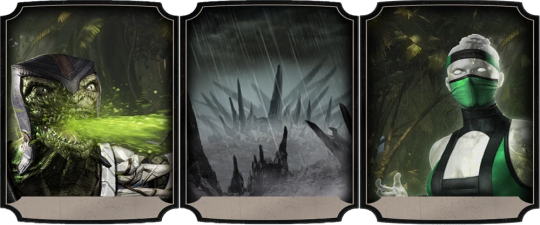
the new era:
SYZOTH/REPTILE:
unlike his previous iterations, mortal kombat 1's syzoth is not in a desperate cycle of trying to restore his race. however, he was run out of his homeland of zaterra after being relentlessly bullied for his shapeshifting mutation. up until his arcade ending, syzoth believed he was the only one of his kind who possessed this ability. syzoth joined a traveling carnival to profit on his shapeshifting skill, even marrying an unnamed woman with whom he had a son with. him and shang tsung crossed paths, and when the latter asked to experiment on him, syzoth denied the offer. but shang tsung took syzoth's family hostage anyways, using them to keep him obedient in being a slave; from there, he was experimented on and aided in shang's inhumane experiments on others, all for the sake of his family. that went on for months, before the earthrealmers and baraka were captured and fought their way out of shang tsung's laboratory. syzoth tried to stop them, knowing that if he didn't his family would be killed, but lost the battle to baraka. after this, syzoth learned the truth: his wife and son had already been killed devastated by this, but also understanding that there was nothing keeping him under shang tsung's thumb anymore, syzoth escaped into the living forest with the other men. from there they met ashrah, attempted to stop the sorcerer quan chi from activating his soul stealer in the living forest—but despite failing at that the group still captured him with the intention of bringing him to earthrealm for questioning. to help his companions escape, syzoth disrupted the shivai ranatai festival in sun do and fought off several other characters, providing enough of a diversion for everyone to flee the realm (without quan chi, who managed to get away). it's not known what syzoth did for the remainder of the main story after arriving in earthrealm, but in his tower ending it's revealed that mileena appointed him as her emissary as thanks for helping unveil the truth behind shao and shang's plans. with his renewed political status protecting him, syzoth journeyed home to zaterra, where he discovered the conspiracy by the zaterran government to exterminate all shapeshifters. at some point after the main story's events, syzoth entered a romantic relationship with ashrah, but the details of how this began are (sadly) currently unknown. (more info TBA if khaos reigns gives me anything else)
KHAMELEON:
in the new era, khameleon is no longer the last female zaterran alive. in fact, khameleon isn't even the same species as syzoth anymore. an intro with takeda reveals that khameleon is a saurian, which is said to be distinct from zaterrans. the details of khameleon's life are largely unknown, but she is a member of the umgadi, a group of warrior priestesses. umgadi members are selected from firstborn women in outworld, taken as infants to be raised as one and train to protect outworld's royal family. khameleon was seen throughout the main story assisting tanya in fights against percieved threats to the royal family. she is probably a fellow reptilian shapeshifter, but unlike syzoth she keeps strictly to a human form. (more info TBA if khaos reigns gives me anything else)
ARCHDUKE MAHAZZEM:
only being mentioned once in a syzoth/sindel intro, mahazzem is one of zaterra's many archdukes. the only known details about mahazzem is that sindel considered him to be a friend, but this "friendship" was a mask. in truth, he secretly plotted to betray sindel and rebel against her rule. (more info TBA if any intros or even KR, while unlikely, gives me anything else)
OTHER POSSIBLE MEMBERS: erlac dicharr, nareb nevets, hatigo mesgo, sever nahhan, sykin foh
these are names from syzoth's gear that could be of other reptiloids, as they don't really sound like locations or events, and i don't think they're references to real-life things as nothing comes up when i google them. but at the same time i'm not entirely sure, so take this last bit with a very large grain of salt

k thats all for now byeeeee
#this took so damn long to type. never again man#before anyone asks no i am not covering the tv shows or movies#reason being that i didnt want to LOL#mk#mortal kombat#mortal kombat reptile#reptile mortal kombat#reptile mk#syzoth#syzoth mk#syzoth mortal kombat#khameleon#chameleon mk#saurian#zaterran#zaterra
47 notes
·
View notes
Note
I am Desperate to hear more of your mk worldbuilding headcanons (also, your art is stunning)
Aaaa thank you 💕 Don’t worry I got you
Zaterrans are modern human’s missing ancestor.
Male Osh-Tekk are teal while females are brown. They also have feathers instead of hair with bird hands and feet.
Edenia has a huge veiling culture.
The Kollector was the one who brought Sento to Outworld, Shang Tsung purchased it from him.
Khao is made entirely of islands completely disconnected from each other (ex. desert island right next to a swamp island). On the other hand Seido is one large continent with little biodiversity.
Omegis is the baba yaga.
Cyromancers naturally have fast heartbeats because their heart is trying to compensate for how cold their bodies are.
Most folklore creatures come from races and animals from different realms accidentally crossing a rift.
There aren’t many coastal settlements in Outworld because the merging of realms always causes flooding.
#did you know humans have a missing ancestor? you do now#I’ve rewritten Omegis a lot in my au#I’ve mostly based her off her first appearance and disregarded the following ones XD#she’s true neutral if you ask me#also Outworld races!! gotta give them some love#and make them not be humans with microscopic differences#edenia#outworld#chaosrealm#orderrealm#<- I will be using Khao and Seido to refer to those two respectively in my text posts#bc they’re one realm in my au so the only thing dividing them is the sea#I’m just tagging the realms#mortal kombat#mortal kombat worldbuilding#cfa posts
32 notes
·
View notes
Text
Khemor gro-Skaven
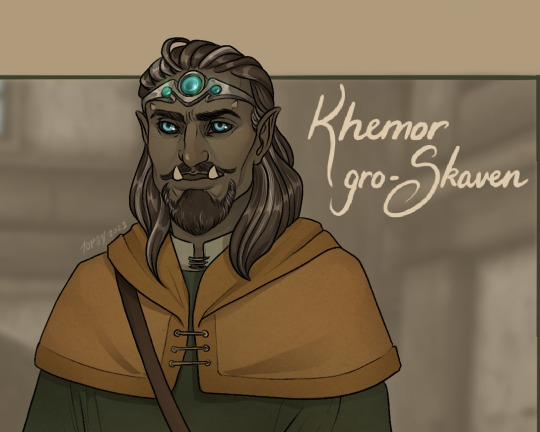
(Portrait by @thana-topsy, full version here)
Race: Osh Ornim (Iron Orc) Sex: Male Birthdate (given): 1st Morningstar, 4E 161 (40 years old in 4E 201) Birthdate (actual): Unknown Birthplace: somewhere in the Dragontail Mountains. Places of Residence: Skaven, Hammerfell > Water's Edge, Cyrodiil > Windhelm, Skyrim
Former factions: College of Whispers Current factions: Stormcloaks, Thane of Windhelm and the Pale
Khemor’s story will be told in my Homeric Orcs Series.
Early life in Hammerfell
The Iron Orc who would eventually be known as Khemor gro-Skaven was barely five years old when he was stricken with Rockjoint. ("Common in little orc children." --Murbul) Although he survived the disease, it left one of his legs atrophied and partially paralyzed. His clan, a particularly brutal group of Osh Ornim, intended to abandon him in Dragonstar in Craglorn as they did not want to waste the resources of the stronghold raising a permanently disabled child.
Whether it was fate, the hand of the gods, or just coincidence, Khemir at-Arlimahera, a wizard from a prominent Crown family in Skaven was traveling through the area and encountered the abandoned child before any harm befell him. The wizard sensed Khemor had a deep well of magicka and even though he was completely untrained he was manipulating the ebb and flow of ambient magicka in the world.
From Nostos, Khemor's central fic, set after the Main Quest and conclusion of the Civil War:
“My master was a once-in-ten-generations intellect when it came to the ebb and flow of magicka, delving into the secrets of the arcane, and uncovering the mysteries of Oblivion. But he was at a loss when it came to choosing a name for an Orsimer foundling.”
Khemir brought Khemor up as his apprentice: while Skaven was more magically inclined than most places in Hammerfell, Khemir's studies focused on various forms of Mysticism that intersected with Necromancy. Thus Khemor learned to be very circumspect and discreet from an early age.
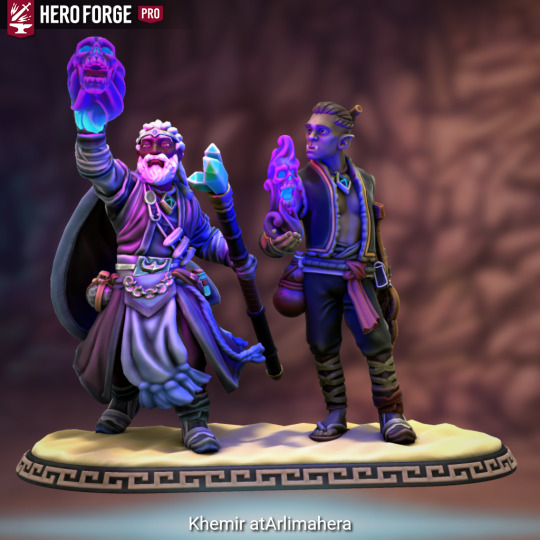
Because of the reputation of Iron Orcs as particularly brutal and unintelligent, Khemor views his heritage with a deep sense of shame, and was brought up almost completely divorced from larger Orc culture, even more so than most "city Orcs" as he lacks any connections to anyone living in a stronghold. Most non-Orcs or people who are not from the Dragontail mountains do not pick up on the indicators of his heritage, and most who do clock him are too polite to mention it.
However, he does have a particular fondness for unusual rocks and minerals, and picks up pretty ones whenever he finds them. He also prefers to use un-faceted Soul Gems.
The Great War came to Skaven in 4E 173 when Khemor was twelve years old:
In Hammerfell, Imperial fortunes took a turn for the better. In early 4E 173, a Forebear army from Sentinel broke the siege of Hegathe (a Crown city), leading to the reconciliation of the two factions. Despite this, Lady Arannelya's main army succeeded in crossing the Alik'r Desert. The Imperial Legions under General Decianus met them outside Skaven in a bloody and indecisive clash. Decianus withdrew and left Arannelya in possession of Skaven, but the Aldmeri were too weakened to continue their advance.
--Legate Justianus Quintius, The Great War
Despite "only" lasting two years, the Empire's abandonment of Hammerfell and subsequent Thalmor occupation of Skaven was very formative for Khemor. Both he and his master were able to weather the occupation, but it took a toll on both of them. Khemor especially was not able to recieve chiurgeons' services for his leg during that critical time, which meant that his leg was unable to make a complete recovery like they had hoped, and so he’s used a cane to walk for his entire life.
From Katabasis, the story that details Calder the housecarl's adventures alongside Khemor during Skyrim's MQ:
Khemor sighed. “To say that I was ‘in’ [The Great War] would be a grave misstatement. I was only a child. Rather, the war came to Skaven. I was living there when the…order for the Legions to abandon Hammerfell was given.” A look of immense sadness passed over Khemor’s face. “Many of the Legion, mostly Nords and native sons of Hammerfell, refused to abandon Skaven, and deserted to continue protecting us. It was futile, of course. They were overrun and the Dominion occupied the city for two years.” He looked again at Calder and said quietly, “I am well-acquainted with the cruelties the Thalmor visit upon the populace of the places where they have control.”
While Khemir's social position and influence protected their household somewhat during the occupation, it was not easy, and Khemir's health never truly recovered. Before he died in 4E 187, he helped Khemor secure a position in the College of Whispers in Cyrodiil, despite neither of them being particularly inclined towards the Empire. In appreciation for his loyal service to and care of Khemir during the final, ailing years of his life, Khemir's family gave Khemor several of his former master's magical heirlooms before he left for his new life in Cyrodiil.
One of Khemir's grandnieces currently runs the family estate, and she and Khemor are on friendly terms and communicate somewhat regularly.
Life in River's Edge

(Portrait by @thana-topsy, full version here.)
With his command of languages, he was able to perfect his chosen sub-field of necromancy: spirit-calling and speaking with the dead. After all, what is the use of summoning the shade of a long-dead person to answer your questions if you won't be able to understand each other? This ability led to Khemor rising quickly through the ranks of the College of Whispers, and his calm and pleasant demeanor meant he was often chosen to lead delegations to advise the Elder Council or other political entities in Cyrodiil.
It was because of this role that in the year 4E 201, when word came to the leaders of the College of Whispers that the Synod and the Thalmor were scheming to gain influence with the College of Winterhold in Skyrim, Khemor was chosen to travel to the far, frozen north of the Empire and attempt to establish a line of communication Archmage Savos Aren.
Because of the unstable political situation in Skyrim, once he was through the Pale Pass Khemor changed his Legion escort for one comprised solely of Fighters Guild mercenaries. His entourage left Helgen for Riften on the 14th of Last Seed, 4E 201. Khemor noted the unusual number of Legion soldiers stationed at such a small outpost, but thought nothing of it.
When the escort arrived in Riften, they learned of Ulfric's capture and escape and hear the first rumors of dragons returning. However, it isn't until a dragon is sighted flying over Lake Honrich into the Jerall Mountains that Khemor takes the reports seriously. For safety, a larger group of travelers gathered in Riften to travel to Windhelm, leading to a significant delay of Khemor's itinerary. During this time, he composes what will end up being his last piece of correspondence to his superiors in the College of Whispers, detailing what he has heard about the return of the dragons to Skyrim before the ad-hoc caravan sets out for Kynesgrove…
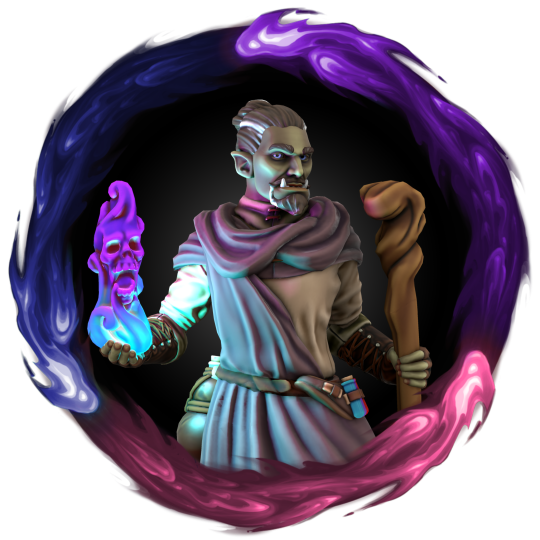
45 notes
·
View notes
Note
I like to imagine most Outworlders don't speak English if we were being realistic with workdbuilding. The royal family and their advisors would probably interact with Earthrealm officials during visits but regular Outwrolders probably wouldn't.
The only reason they speak English is for our convenience but realistically most probably shouldn't and it'd be funny if the language barrier popped up at times.
Like I imagine Quan Chi didn't speak English initially so he didn't register Titan Shang was talking to him when he was doing his job in the mines. Like Titan Shang thinks Quan Chi is ignoring him...when in reality Quan Chi simply doesn't register he's talking to him at all.
That is exactly my thought - worldbuilding wise, common Outworlders shouldn’t speak English or any other Earthrealm’s dialects, as they do not have a constant contact with totally foreign cultures from Liu Kang’s realm. I don’t think we ever heard of any vital trade between Earthrealm and Outworld and the portal between realms isn’t that easily accessible for people to just snuck in, and it is not just about Outworlders being wary of Earthrealmers but also Liu Kang decided to keep existence of other realms in secret from majority of his people. So the contact is limited and let’s not forget that the same as Earthrealm, Outworld is not culturally homogeneous realm either, as there is many different cultures coexisting there, like Edenians, Shokan, Centaurians, Saurian, Osh-Tekk to name few. So learning additional Earthrealm's dialects may be more difficult to some of those people than to others.
It makes sense for the Royal Family, their palace guard (Umgadi), advisors and for some military officers like General Shao and Reiko to learn English and possibly other earthrealm dialects, as such knowledge is vital to diplomacy and state security.
It is understandable that the games use English as common language for simplicity, however
It really is sad how the cultural/language barriers are not exploited as it has such a great potential (the closest things are: Johnny’s references to Alien that Kung Lao misunderstand as Cage calling Tanya a slur and was both offended and confused by the whole thing and Mileena thinking that drone is some kind of magic)
I don’t like the implication in Liu Kang’s timeline that Great Britain again influenced the whole world to the point English is the commonly used language because with that implication comes the question: did some Earthrealmers again suffer under the regime of other countries, be it under colonization or losing their country's independence. I mean, it is Liu Kang’s timeline, why Royal Family don’t speak in his native language as they had the longest contact with the Fire Lord and English is not, logically thinking, Raiden’s native language either?
Let’s just agree I’m very picky about this issue and I would love all the shenanigans coming from characters speaking in different languages and sometimes failing - or on purpose making it difficult to communicate well. Or, as the Lin Kuei faction has the number of native-speakers from different cultures (China, Czech, Botswana), they could utilize other languages as their “secret dialect”. Like Lin Kuei brothers waiting for Liu Kang, instead of speaking English between themselves, they could talk in Tomas’ native language because the chance Kung Lao, Raiden or Liu Kang’s servants would understand Czech is slimmer than them understanding English.
I’m seriously crying over the untapped language potential Mortal Kombat has for years.
As for Titan Shang Tsung, I’m gonna trust he was smarter than using English, when Quan Chi was born in mines and spent his whole life there. The mortal Shang Tsung consuming souls for ages most likely knew and could fluently use a vast number of dialects, so I imagine Titan Shang Tsung would figure out pretty quickly that no one in mines used earthrealm language and talked to Quan Chi in a way he could perfectly understand him, especially since “Damashi” needed Quan Chi’s trust to process the great plan of his.
#mortal kombat#my replies#outworld#lin kuei#shang tsung#where are the characters speaking in their native languages? even if just to curse under their noses#i wanna them to have their native cultures acknowledged!#and seriously our five main lin kuei could speak Czech and Tswana to confuse people around them or comment people's idiocy XD
25 notes
·
View notes
Text

✯ Round 1 ✯ Match 68 ✯
The current flag of Osh, Kyrgyzstan

Propaganda:
None
vs.
The current flag of Truskavets, Lviv Oblast, Ukraine

Propaganda:
None
Tournament Policies: ✯ Choose the flag that's more meaningful to you! ✯ Be respectful of place names and cultural symbols in your commentary! ✯ If you want to submit propaganda, you may do so at the submission form linked in the pinned post. It will only be included if it is submitted before the next post with that flag is drafted and will be included in all subsequent posts the flag is featured in.
#cft polls#polls#flag: Osh - Kyrgyzstan#flag: Truskavets - Lviv Oblast - Ukraine#eyestrain#eyestrain: color
9 notes
·
View notes
Text
Wisdom of the Thunder Beings
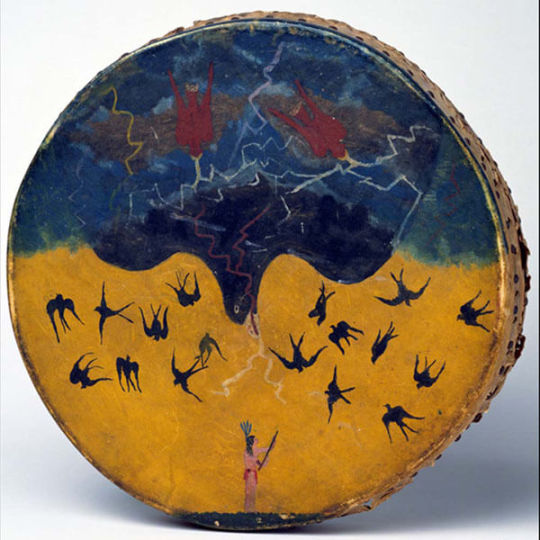
The Thunder Beings are a related family of divine beings who bring about weather changes such as thunder, lightning, wind and rain. Through their power abiding in the atmosphere, they sustain the Earth and protect the people. Through lightning, they directly purify the air we breathe, the water we drink, and the earth we cultivate. They create a world-wide lightning display that produces and maintains the "heartbeat frequency" (Schumann resonance) of the Earth's electromagnetic grid. Their holy medicine includes creativity, fertility, protection, peace, harmony, balance, compassion, wisdom, enlightenment, death and rebirth. Through the Thunder Beings, all life has been created, is sustained and will be destroyed. They sustain balance and destroy imbalance, the cause of suffering.
From time immemorial, people have worshiped the Thunder Beings. They are the source of all ideological, religious and spiritual transmission. The early cultures attribute their belief systems to the teachings of rain gods and goddesses. Their myths tell of how rain deities created the world, humans and all life. They came down to Earth in the distant past and gave humanity language, law, the arts, spiritual sciences, wisdom and knowledge. The Thunder Beings were instrumental in teaching their mortal cousins how to properly honor and commune with the spirits to gain their blessings.
The core beliefs and principles of all spiritual cultural traditions come from the Thunder Beings. The Native American spiritual traditions originated from the rain deities known as Wakinyan, Animiki and Kachinas. The Mongolian shamanic traditions originated from the sky deity known as Tengri. The Maya shamanic traditions originated from the lightning deities known as Chaac, K'awiil and Yaluk. The Chinese Taoist traditions originated from a thunder god known as Lei Kung. The Australian Aboriginal shamanic traditions originated from the cloud and rain spirits known as Wandjina. They are the roots of all integral shamanic and wisdom traditions.
Among the Yoruba people of West Africa, the orisha (god) of thunder is known as Shango. Shango is renowned for his oshe, a double-headed battle-ax, as well as the double-headed bata drum he uses to summon rain storms. The orishas are the powerful divine spirits of the Yoruba religion. They are the creator and sustainer of all things. They are the manifestations of primordial energies, both creative and destructive. They are the conduits by which life and all cultural wisdom entered the world. Like all of the Yoruba gods, Shango is both a deified historical ancestor and a divine natural spiritual force. Orishas enter the mortal world, complete epic feats, live, die and then are reincarnated into the world to complete even more amazing tasks. They are immortal energies that represent a core part of Yoruba philosophy and belief.
Every spring, the Lakota people gather at Black Elk Peak in the sacred Paha Sapa (Black Hills) for the "Welcome Back the Thunders" ceremony. The Lakota ceremonial season begins with the return of the Wakinyan or Thunder Beings. According to legend, the Wakinyan are huge winged beings that humans cannot see because they are shielded by thick clouds. Thunder is made by the sound of their voices, and lightning is created when they open and close their eyes. The Wakinyan created wild rice and gave the Lakota the spear, the tomahawk and pigments to make them impervious to weapons. The annual vernal equinox ceremony ends with Lakota teens carrying a sacred pipe and food offerings to the top of Black Elk Peak. As the highest point in the Paha Sapa, the Lakota consider it to be the most appropriate spot to bring prayers to Wakan Tanka (Great Mystery).
Among the Pueblo people of the American Southwest, the deities known as kachinas bring the rain for their three main crops: corn, beans and squash. Puebloans believe that kachinas are divine spirits present in features of the natural world such as clouds, winds, thunder and rain. They are also ancestral spirits that help connect humans with the spirit world. They come to the human realm to collect the people's prayers and take them back to the spirit realm. The kachinas dwell in sacred mountains and other holy places, but spend half of each year living near Pueblo villages. During this time, the men of kachina societies perform traditional ceremonies linked with the presence of the spirits. They wear costumes and elaborate masks and perform songs and dances associated with specific kachinas. The Puebloans say that during these rituals each dancer is transformed into the spirit being represented.
In the Asian traditions, the Thunder Beings are responsible for expressing the higher truth of spiritual reality, safeguarding it and disseminating it for the benefit of all beings. The essence of the Asian spiritual traditions is the direct experience of enlightenment--of perfect tranquility and unconditional bliss. This experience is fully attained through the Thunder Beings by virtue of their mystical thunder and lightning blessings. In Tantric Buddhism, their names and images are used in visualization-based meditations to awaken the mind. Through the proper use of these images and sacred sound in meditation, we can liberate our minds from suffering.
The Thunder Beings are invisible, yet out of compassion they reveal themselves through thunder, lightning, wind and rain. Their visible manifestation or mystical visitation is universally one of storm-display. Even though there is great destructive rage in storms, in truth this is merely a means of ushering in peace, of clearing great obstructions. Everything that the Thunder Beings do has the effect of bringing about peace and harmony.
Thunder Beings are perfect and beyond suffering. Nature is their manifestation; it is quite beautiful and harmonious. Where there is calamity, the cause is poor human activity, such as war, pollution and environmental devastation. There is little peace on Earth because there is little peace in our hearts. In order to establish it, we must diligently work for it through meditation and through compassionate activity. Meditation--whether it's silent or drumming up a storm--increases our wisdom and insight, our capacity to be of true help to others. Wisdom is the light of the Thunder Beings shining through our heart. It is the lightning within us striking its way out.
#shamanism#cosmology#mythology#kachina#lightning#thunderstorm#orisha#rain#enlightenment#divine beings#weather
8 notes
·
View notes
Text
The Bukharian Jewish community, while little known by the world’s broader Jewish population, is certainly no stranger to the kitchen. With historical exposure to multifarious global influences, from Central Asia to Eastern Europe to everything picked up along the Silk Road, Bukharian cuisine reflects profound cultural fusion while maintaining its own unique flair. Here are eight essential Bukharian dishes that are worth a try:
Bakhsh

A staple in any Bukharian Jewish household, bakhsh is a rice dish easily recognizable for its distinctive green hue, which results from the addition of green herbs like cilantro and dill. Finely chopped meat or chicken, onions and other aromatics also feature prominently. Bakhsh is cooked using two primary methods — either by gradually layering the ingredients in a pot or submerging a bag with all the ingredients in boiling water. The latter preparation method, which allows the dish to be pre-cooked, was traditionally favored by Shabbat observers.
Osh Sovo
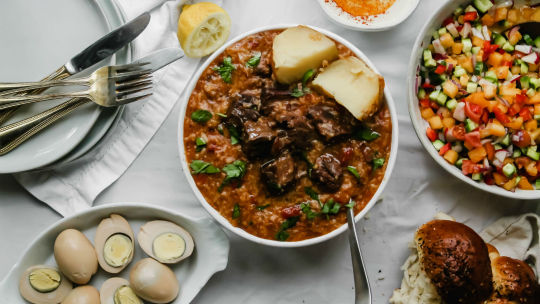
Another meal created to accommodate Shabbat, osh sovo is a slow-cooked fruity, meaty rice dish that is commonly served for Saturday lunch after being cooked overnight, beginning before the onset of Shabbat. The fruits incorporated into the rice are typically tangy and dry, often including prunes or dried apricots. Vegetables (such as tomatoes, carrots and potatoes) and spices (paprika or turmeric) are also thrown into the mix. The result is an incredibly silky, sweet-and-sour dish that’s a cross between a stew and a risotto.
Kov Roghan
This dish is simplicity at its finest — soft potato wedges are simmered with cubes of either chicken or meat in a broth to make for a heart- and soul-nourishing meal. Some soak up the remaining broth on the plate with lepyoshka, a round Uzbek bread adopted by Bukharians.
Osh Palov

As Uzbekistan’s national dish, osh palov (also commonly called plov) has been adopted into a beloved food enjoyed at all sorts of Bukharian gatherings. To prepare it, chopped lamb is browned at the bottom of a large pot, after which thinly sliced carrots and onions are added, all topped with sticky and often oily white rice. Raisins, chickpeas and whole heads of garlic also typically adorn a large platter of plov, which often serves as the final course at large Bukharian dinners.
Osh Piyozi
Adopted from Afghan culture along the Silk Road, osh piyozi consists of softened, bite-sized stuffed onions. Fillings typically consist of a mixture of ground meat and rice, and the onions are often served in a sauce featuring tomatoes, dried fruits and peas, giving tasters a melt-in-your-mouth, umami bite.
Samsa

A cousin of Indian samosas, this baked savory pastry consists of triangle-shaped laminated dough filled with anything from ground meat and onions to pumpkin. While Uzbek households use butter or ghee as a laminate, Bukharians typically use non-dairy fats or opt for a non-laminated dough in order to maintain kashrut. One can often find a spicy tomato sauce beside a serving of samsa, which is meant to be drizzled into an opening in the pastry shell.
Sirkoniz
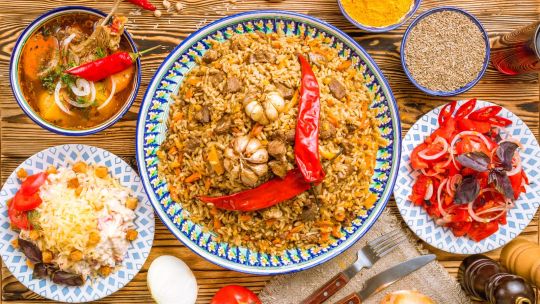
This rice dish can be perceived as a variation on osh palov, setting itself apart in two main ways: its distinct garlicky flavor and the fact that it is almost always served cold, another ancient Bukharian strategy for eating enjoyably while observing Shabbat.
Manti
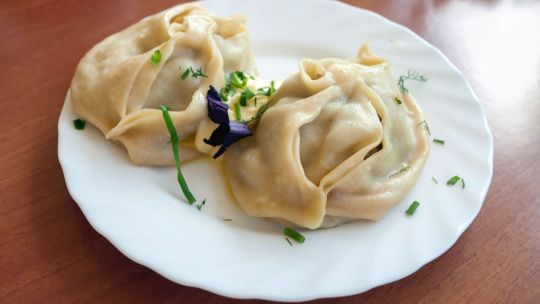
Adopted from Uzbek cuisine, manti are traditional steamed dumplings stuffed with ground beef and diced onions, often served with the same spicy tomato sauce used for samsa. Unlike some variations across the Caucasus, Bukharian manti are distinctly large, usually requiring a few bites to finish.
20 notes
·
View notes
Note
do you think they have any shared interest or hobbies :0
they definitely bake! uzbekistan was nomadic for a while before settling down, so the food she has is definitely tasty, but for survival. making something sweet would have been a luxury these nomadic tribes didn't feel the need to have, hence her small array of desserts.
turkey however was given a lot of time to sit down and crave something sweet. not just that, he was surrounded by cultures that had something to bring to the table, which is how you get food like baklava, lokum, kunefe, and others.
so you have someone who doesn't know how to bake, and someone who has years of experience. he'd definitely teach her how to bake sweet treats!
in turn, she teaches him how to make her food: dimlama, somsa, and of course, osh/plov! heavy emphasis on the last one, this one time turkish food creators were trying to cook osh, they did it in a frypan... WHERES YOUR WOK !!
but its ok because when uzbekistan teaches turkey to make uzbek pahlava, he almost cries inside. raisins?? a meringue layer?? what??
they both also watch turkish dramas. though it's funny because when they watch it at her house, some parts sadik was absolutely sure were in the episode are just gone.
🇺🇿: see we had to get rid of the not halal parts of the episode
🇹🇷: so you got rid of like. half the episode???
🇺🇿: i got jumpscared by a guy and a girl eating their faces off once it's not happening again
so anyways the marketing team for mendirman jaloliddin definitely called them over and took promotional pics with them.
they also probably watch those russian true crime dramas about cases from the ussr(rip uzb is a true crime girly)
dancing! when turkey goes to uzbek weddings with her, she(and the local grandmas) teach him how to dance. she falls on the floor in stitches every time. halay is easier for her to get used to, until the music randomly speeds up and slows down.
unrelated but... in my mind...miss nargiza is so so good at lazgi. this is my sign to draw her in a lazgi fit. it's how she trains herself to smile at world meetings, since you need to keep a smile on the whole time. watching her dance is...kinda uncanny...
museums, sometimes? uzbekistan loves going to art and history museums, she likes looking at the legacy her people have left behind! she brings turkey along as well. depending on what kind of museum, he'd be down for it or he'll pass
🇹🇷: but i've already seen you in those outfits like 3 centuries agooooo
🇺🇿: ok but have you seen these tapestries?? never probably
music. rubob-baglama duo when
reading! i like to think sometimes they'll chill and read
oh omg clothes shopping too. again I can see turkey flip flopping around: sometimes he likes it sometimes he hates it but I imagine they spend time picking out each others' outfits <3
#hetalia#aph uzbekistan#hws uzbekistan#aph turkey#hws turkey#nargiza yusufqizi#sadik adnan#turkuzbek#tokki writes#tokki answers
7 notes
·
View notes
Text

International Day of the World’s Indigenous Peoples
On the 9th of August, the UN celebrates the International Day of the World’s Indigenous Peoples, and we celebrate some Indigenous queer history! Here’s a few of our podcasts you can check out to learn some more!
We’wha (pictured)
Born c.1849 at Zuni (now in New Mexico, USA), We’wha was a lhamana - a Zuni gender including both masculine and feminine roles. Like many lhamana, We'wha was a highly skilled craftsperson, proficient in both traditionally masculine, and traditionally feminie crafts.
In 1885, We’wha travelled to Washington DC as a representative of the Zuni people, where they worked with anthropologists and the Smithsonian museum to demonstrate and share information about Zuni crafts and culture, and met US President Grover Cleveland.
Click here to check out our podcast on We'wha!
[Image source - note this source was incorrect in the original post and has been corrected]
Kapaemahu
According to Hawai'ian oral histories, in around the 1500s, four healers visited Honolulu from what are now the Society Islands. These healers - named Kapaemahu, Kahalao, Kapuni, and Kinohi, were māhū, a gender recognised in Kānaka Maoli (Native Hawai’ian) culture, with a particular focus on healing and caring roles.
When they departed Hawai'i, the four māhū left behind four huge stones as a momento of their visit, imbued with their healing powers, which are still revered in Hawai'i today.
Click here to check out our podcast on Kapaemahu!
Osh-Tisch
Osh-Tisch was a batée born in the 19th-century Crow Nation. Batée is a uniquely Crow gender identity, describing a person assigned male at birth, who performs female as well as specifically batée social roles. Osh-Tisch was renowned for their skills as a craftsperson, their bravery in the 1876 Battle of the Rosebud, and as the best poker player in the region. In the face of attempts by the US government to force assimilation to Western ideas of gender, Osh-Tisch’s community fought for their right to express their identity.
Click here to hear our podcast on Osh-Tisch!
#indigenous peoples day#indigenous history#queer history#two-spirit history#hawaii#hawaiian history#zuni#zuni history#crow#crow history#lgbt#lgbtq
188 notes
·
View notes
Note
Why do I have a feeling suchin's, jade's and harumi's outfit are different from the rest of the umgadi as they have different colour schemes.
For harumi it's pink.
For suchin it's red.
For jade it's green
What if suchin and harumi put some of their cultural accessories in their outfits maybe a hair pin, bracelet, flower patterns and piece of traditional clothing?
The design of the uniforms are the same, but they are indeed of different colours, which ultimately make the girls stand out among the other Umgadi trainees!!👀
Harumi wears pink as it is her clan's colours. That because when her ancestors first met Cetrion, her hair was a Pink Ipê tree (Cetrion can change her hair at will and it always looks like a different tree)

Her tattoos are to represent the people she loves and show her extent knowledge of flower language as well as her connection to nature/Cetrion.
She carries a belt with all her potions and herbs, as well as her clan's insignia.
She used to adorn her hair with golden hairpins and flowers, but she cut it short when she moved to Outworld, and now her options became limitated, so Kuai gifted her a bunch of these little flower clips for kids:🤭

"Just so your bangs don't cover your eyes during training 👉👈"
---
Suchin and her family wear red as a tribute to their saviour, Delia (usually her devotees wear yellow, but the Bunnag are not usual devotees anyways (plus, Seidans don't really worship Delia, so they are trying their best here🫣)).
Her lily tattoos represent redemption and therefore her family.
Once she felt homesick and her friends helped her find the perfect pieces of fabric to make herself a Chut Thai, which she proudly wore whenever she had a chance to dress nicely!
She brought with herself her own pair of swords, they aren't quite as grand as the ones Delia made and she will one day yield, but they serve her well!
---
Jade comes from a city adorned by green gems, so it became the symbol of her family and green their colour.
She wears make-up and a lot of bling as a symbol of her status as countess, but she chooses to wear only the ones gifted to her by the Osh-Tekk/Kotal as they were the most present figures in her life.
Her sun tattoo is to represent her connection with Delia, who the Osh-Tekk call Osh-Mutter (mother sun).
---
Tanya is more subtle, but she wears a different (lighter) shade of yellow, that along with her face paint, show that she was raised by the Umgadi but not the ones from Sun Do.
#every brazilian girl had hairpins like those#god knows they are shit but they were absolutely adorable#them being adorable was what compelled kuai to buy them#cetrion's hair was inspired by the ipe tree right beside my house#ipes are absolutely gorgeous so i'm hyping them up#brazilian culture is discreetly being spread all over this au#umgadi girls au#umgadi#harumi shirai#suchin#mk jade#mk tanya#kuai liang#kuairumi#cetrion#mk delia
5 notes
·
View notes
Text
new blog post: ICFA: the last two days
new blog post on https://mizkit.com/icfa-the-last-two-days/
ICFA: the last two days
Let’s see. Friday I had a 10:30am thing, which I know because I couldn’t have breakfast with the family. Oh, yes, it turned out to be what Geoffrey Landis said might have been the most fun he’d ever had at an ICFA panel! laughs
It was a panel with myself and Kate JohnsTon, moderated by Novella, and Kate read an incredibly funny piece from the point of view of a genetically engineered modern T-Rex who was very, very horny, followed by two more very funny pieces, after which I read from my Pride & Prejudice pastiche, Magic & Manners, which was not nearly as funny and yet led, ultimately, to what arguably became the theme for the panel, which was…ejaculation. o.o
(See, in Austen, people don’t ‘burst out’ with words when they speak enthusiastically. Sometimes they exclaim, but very often they ejaculate, and given the whole horny T-Rex part of the panel… yes, well, it was very funny and poor Novella was just sort of sitting there with a hand over her face while Kate and I howled with laughter. It was AMAZING.)
Seriously, though, it was a great panel; the audience had good questions, the whole thing was obviously incredibly silly, and we had a truly wonderful time. Kate and I felt like kindred spirits immediately, and just, my god, yeah, it was really fun. I’m sure I could come up with more details (actually, the Magic & Manners stuff led into a pretty good, if brief, conversation about decolonization of fantasy), and I know we made Kate read more of her T-Rex book (which is actually a post-apocalyptic story based in a lot of science, and I’m really looking forward to it), but yeah, overall, it was great.
I think we went straight to lunch after that, where Mame and his wife, Woppa Diallo, who was the other guest scholar but was unable to attend in person, gave plenary speeches that ended with me having an entire LIST of non-fiction books to read; Mame (suffering, as he was, from imposter syndrome) kept saying he hadn’t even realized he WAS a scholar, but my god, the man is incredibly well-read, well-spoken, and insightful. We should all ‘not be scholars’ like he is. He and Woppa both spoke about ‘whimsy’ in African cultures, which was so interesting I may break it out into a short blog post of its own, and just…yeah, it was great.
Friday afternoon all the GoHs had a student caucus thingy that we went to in order to be available to answer questions specifically from students. Mostly there weren’t students in attendence, but the moderator (Andrew, from yesterday’s post) was great, and we ended up having a really good discussion, some great audience questions, and hopefully some insightful stuff was said. (Mary did end up asking me if I’d considered the possibility that I’d been a shaman in a previous incarnation, so, you know, things went a lot of places in that conversation!)
Ellen (Kushner, yes yes I’m definitely name dropping) invited me out to dinner on Friday with herself and Delia, and a couple of other people, including Kate of the T-Rex story, MaryAnne Mohanraj, who ofc I knew OF (we own one of her cookbooks, in fact!) but whom I’d never actually met, and a charming man named Will whose last name I’ve forgotten but whose reading I’d enjoyed earlier in the conference. Ellen apparently has a thing about finding good places to eat that aren’t right on the conference site, and we ended up going out for an Uzbek/Turkish meal that was almost impossibly delicious. We were partway through ordering when it became clear we were going to order half the menu, and the guy taking our order said, more or less “ok but you’ve got to order the to’y osh, it’s the house special,” and upon being reassured that we intended to, we just hadn’t gotten there yet, was satisfied. :D It was a wonderful, funny, delightful evening with absurd amounts of truly delicious food, and I’m extremely grateful for it. wibbly smile
Saaaaaaturday…oh, I hung out with MaryAnne Mohanraj in the morning for a bit, and…at some point? I had another panel? I think? With the other GoHs? And it was–well, for one thing, we were asked to read, which literally none of us expected, but Mame had his award-winning short story on his phone and Mary had a copy of one of her books of poetry with her AND she had a copy of URBAN SHAMAN!!! that she plopped in front of me to sign and, as it turned out, read from. :D And after that it was a Q&A that ranged from use of time in our various pieces (AGAIN, some really INTERESTING STUFF about African perceptions of time in storytelling that could probably use a post of their own) to copaganda, which as I’ve become aware, my stuff is rife with.
I went for a little walk after that and came back into the hotel to sit down and play Pokemon in the lobby, and after a few minutes Mame came by from a walk of his own and sat and we chatted, and then MaryAnne dropped by just as he had to leave, and then just as she was leaving, someone else she knew stopped by, so I was introduced, and as SHE was leaving, someone SHE knew stopped by–it was great, I felt like I was holding court. :D
I met–ah, man, I met so many cool people. I was sitting with the head of the conference’s fairy tale division at dinner one night, and at the banquet reception on Saturday she introduced me to her fairy tale ladies, who included a real genuine fan of mine (the woman who had asked about the copaganda, which was such a good question, honestly), so we had a lovely conversation and then they invited me to be in their annual picture. Obviously I said yes, and my fan, who is short but happened to be standing right next to me, when I said, “Should the shorter people go in front?” said, “I am short but I am not going anywhere. I am never moving from this spot ever in my whole life,” which was pretty cute. laughs She kept saying she was trying REALLY HARD not to completely fall apart, and she didn’t, and she was adorable and sweet and I loved her. :)
The dinner and awards ceremony were lovely–I, as were the other GoHs, was given an honorary award from the BIPOC committee, which made me extremely emotional–and post-dinner we all went out to the pool for an after-party, where I went with the express goal of “I’ll say good night and goodbye and that’s it,” and which took longer than the 90 minutes I’d expected it to (quite a lot longer, actually), but was a wonderful way to end the conference.
I could honestly write more and more and more about it all, but post-con writeups are taking up my “ok I have no brain to write fiction with” time, and I think by tomorrow I’ll be back to Able To Write, so I probably can’t spend the rest of my life waxing lyrical about the conference. :)
Me, Mary & Mame (picture by Mame): We had a great time. :)
3 notes
·
View notes
Text
Kyrgyzstan for MBBS - A Great Option
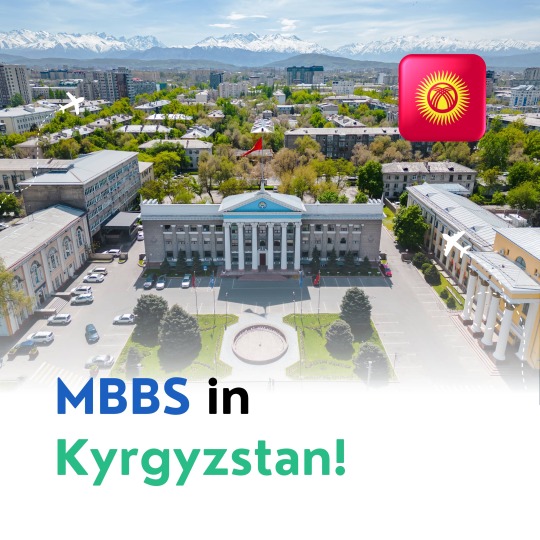
Beyond affordability, Kyrgyzstan boasts universities like Kyrgyz State Medical Academy, Osh State University, and Jalal-Abad State University, renowned for their quality education and modern facilities. These institutions equip students with exceptional training through a comprehensive curriculum and cutting-edge resources, preparing them for successful medical careers.
For many students with dreams of a career in medicine, the path to becoming a doctor can be challenging. Competitive entrance exams, high tuition fees, and limited seats in medical colleges can pose significant hurdles. This is where studying MBBS abroad emerges as a compelling option, and Kyrgyzstan stands out as a particularly attractive destination for several reasons.
Affordability and Quality Education:
One of the most significant advantages of pursuing MBBS in Kyrgyzstan is the affordability factor. Compared to Western countries or even some Asian nations, the cost of medical education in Kyrgyzstan is considerably lower. The total program fees, including tuition, hostel accommodation, and living expenses, typically range from INR 20 to 32 lakhs (approximately USD 25,000 to USD 40,000) for the entire duration of the course. This makes it a realistic option for students from middle-income backgrounds who might not be able to afford exorbitant medical education costs elsewhere.
However, affordability shouldn't be misconstrued with a compromise in quality. Kyrgyzstan boasts several universities recognized by the National Medical Commission (NMC) of India, ensuring the medical qualifications obtained are valid for practicing medicine back home. These universities follow international education standards and employ qualified faculty to deliver a comprehensive MBBS curriculum. The medium of instruction is primarily English, eliminating the need to learn a new language for international students.
Simplified Admission Process:
Another attractive feature of MBBS in Kyrgyzstan is the streamlined admission process. Unlike the highly competitive entrance exams required in India or other countries, admission to medical universities in Kyrgyzstan is generally based on a student's academic qualifications (usually class 12th marks in the science stream) and eligibility criteria. This reduces the pressure of intense test preparation and allows students with strong academic backgrounds to secure admission more readily. Additionally, many universities offer hassle-free visa application processes, further simplifying the journey for international students.
International Exposure and Modern Facilities:
Studying MBBS in Kyrgyzstan provides valuable exposure to a diverse international student community. Sharing experiences and learning from peers from different backgrounds enriches the educational experience. Universities in Kyrgyzstan are well-equipped with modern infrastructure, including laboratories, libraries, and hospitals, ensuring students have access to the latest technology and resources for a well-rounded medical education.
Focus on Practical Training:
Medical universities in Kyrgyzstan place a strong emphasis on practical training alongside theoretical knowledge. Students have opportunities to participate in clinical rotations and gain valuable hands-on experience in hospitals during their later years of study. This practical exposure prepares them better for the realities of the medical field and equips them with the necessary skills to excel in their careers.
Safety and Cultural Experience:
Kyrgyzstan is a relatively safe country with a friendly and welcoming populace. The cost of living is generally affordable, providing a comfortable standard of living for international students. The country boasts a rich cultural heritage with stunning natural landscapes, offering a unique experience beyond academics. Students can explore the beautiful mountains, serene lakes, and vibrant cities, broadening their horizons and enriching their time abroad.
Things to Consider:
Before embarking on this journey, it's essential to consider some factors. While the MBBS degree is recognized by the NMC, students need to pass the Foreign Medical Graduates Examination (FMGE) upon returning to India to practice medicine. Additionally, adapting to a new culture and environment can require some initial adjustment. Thorough research on the chosen university, accommodation options, and local customs can ensure a smooth transition.
Conclusion:
For aspiring doctors seeking an affordable, high-quality MBBS education abroad, Kyrgyzstan presents a compelling option. With its combination of affordability, well-recognized universities, a simplified admission process, and valuable practical training, Kyrgyzstan offers a stepping stone to a successful medical career. The international exposure, cultural experience, and focus on practical learning further enhance the appeal of studying MBBS in this beautiful Central Asian nation.
2 notes
·
View notes
Note
🐈💛🍛 For our favourite orc <3
Thank you for the ask! From the emoji ask game here.
🐈CAT — does your oc prefer a wide circle of friends or a few close friends?
Khemor would say that he prefers a few close friends. There are many people who would look at the circle of people he is is friendly with and be surprised, or think that he is fooling himself. Because of his diplomatic skillset, Khemor does enjoy meeting new people and is very good at maintaining several circles of "friends," and you won't realize you weren't in his closest circle until you're let into the next tier. He'll send congratulations on your cousin's daughter's promotion to third flautist in the Solitude Children's Chamber Orchestra and remember your birthday and all your food sensitivities; make you feel like the most important and interesting person on Nirn when you're speaking to him...and most people never realize he hasn't told them anything about himself or his own thoughts, emotions, or vulnerabilities beyond surface pleasantries.
💛YELLOW HEART — how many languages does your oc speak? what language(s) are they learning, if any?
Khemor is quite the polyglot! His first language was likely some dialect of Osh Ornim, but as he was abandoned and taken in by a mage from a Crown family before he was five years old, he lost it quickly and grew up speaking Yoku at home, and Yoku and Cyrodiilic around Skaven. Like any well-educated mage, he can read, write, and speak Aldmeris, High Elvish, and Bretic fluently. He has knowledge of dead languages such as Ayleidoon and Dwemeris, though since he has risen high enough in the ranks of the College of Whispers to make free use of the scribes and scriptorium, he has become a little rusty. During his time in the Cynosure of the College of Whispers, he became familiar enough with "street" Ta'agra that he could mostly avoid being cheated by Khajiiti merchants that came over the border, but he will be first to admit that his accent is atrocious. In Skyrim, after being revealed to be the Dragonborn, he spent an entire winter with the Greybeards, learning Dovahzul. Now that it is becoming evident that he will not be able to return to his home in Cyrodiil, Khemor is also focusing on becoming fluent in Nordic to better be able to assimilate to Skyrim's culture. After Alduin's defeat, and Ulfric Stormcloak's victory, Khemor has devoted himself to shoring up the place of the newly liberated Skyrim in Tamriel's geopolitical landscape. This means quite a bit of diplomatic work with other independent nations like Hammerfell and Morrowind. Khemor keeps meaning to pick up Dunmeris, at least to be able to converse with House Redoran envoys and ambassadors in their own language, but because of his close association with Ulfric Stormcloak, there aren't many Dunmer in Windhelm who would go out of their way to help him practice.
🍛 CURRY AND RICE — what does your oc's typical dinner look like? do they usually eat dinner?
If left to his own devices, Khemor would definitely not usually eat dinner. He tends to get distracted and absorbed in his research and forgets to eat. Fortunately he has two housecarls who do a good job reminding him when it's dinnertime. Dinner at Hjerim is usually a simple affair, but with high quality food and cuts of meat as would befit a Thane. Barley bread is a staple, as it is easy to grow even in the harsh climate of Eastmarch, though fine white wheat flour is well within his means to acquire when it is available. Fish, either herring or salmon fresh from the docks, or whatever special Aval Atheron has at his butcher's stall in the market provide the bulk of the protein. Root vegetables such as beets, radishes, carrots, and turnips also regularly make an appearance, especially in skause or pottage. When he can get the beans imported from Hammerfell, he always has a small cup of coffee after dinner.
7 notes
·
View notes